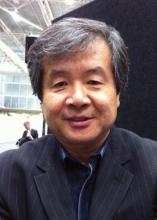SYDNEY, AUSTRALIA – An iPod-based program using music as reward and behavioral reinforcement can lead to significant improvements in stride length and walking speed, according to data presented at the international congress of Parkinson’s Disease and Movement Disorders.
The AmbuloSono system, developed by researchers from the University of Calgary (Alta.), uses an accelerometer to measure stride length and distance walked, and is tied to a music program that only switches on above a certain stride length. The iPod is housed in a pouch strapped above the knee and connected wirelessly to headphones.
"It uses music as a reward, so you have to walk larger steps in order to trigger the music to play, and when your step size becomes smaller, the music stops," said lead author Dr. Bin Hu of the Hotchkiss Brain Institute, University of Calgary.
In a pilot study of 42 patients with Parkinson’s disease, use of the device over a 320-day trial period was associated with significant improvements in stride length (10%-30%) and walking speed (10%-20%) over long distances. In that time, patients walked more than 3,500 km and listened to more than 700 hours of music.
Researchers also noted significant improvements in other functional domains, including arm swings, facial expression, long-term fear and anxiety of using an escalator, and activity avoidance due to depression/apathy.
"Our pilot study indicates that AmbuloSono may be a more efficient behavioral training paradigm than simple rhythmic auditory stimulation to induce functional improvements in multiple domains of motor and nonmotor functions in patients living with Parkinson’s disease," the researchers wrote.
Postural instability and gait disorders can be particularly challenging to treat in Parkinson’s patients, as they do not respond well to drugs and are associated with major functional disability, Dr. Hu said in an interview.
"This program is designed based on the mechanism of reward seeking and learning, so instead of triggering neuroregeneration, you trigger functional compensation," Dr. Hu said.
The music used in the program was chosen particularly for its saliency, to maximize the reward.
"Over time, it becomes automatic, so you essentially learn how to automatically control your walk again, but you need a reward in order to achieve that state because the brain is built in that way – when you engage in reward-seeking, the behavior becomes automatic," he said.
Dr. Hu said the improvements were sustained and patients’ gait problems were minimized to the point where their walk appeared to be relatively normal.
The study was supported by the Canadian Institutes of Health Research, Alberta Innovations Health Solutions, the Hotchkiss Brain Institute, the Parkinson’s Society of Alberta, Alberta Health Services, and the Foothills Movement Disorders Clinic. No other conflicts of interest were declared.


